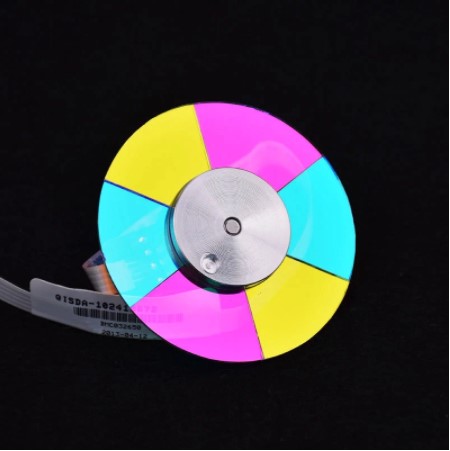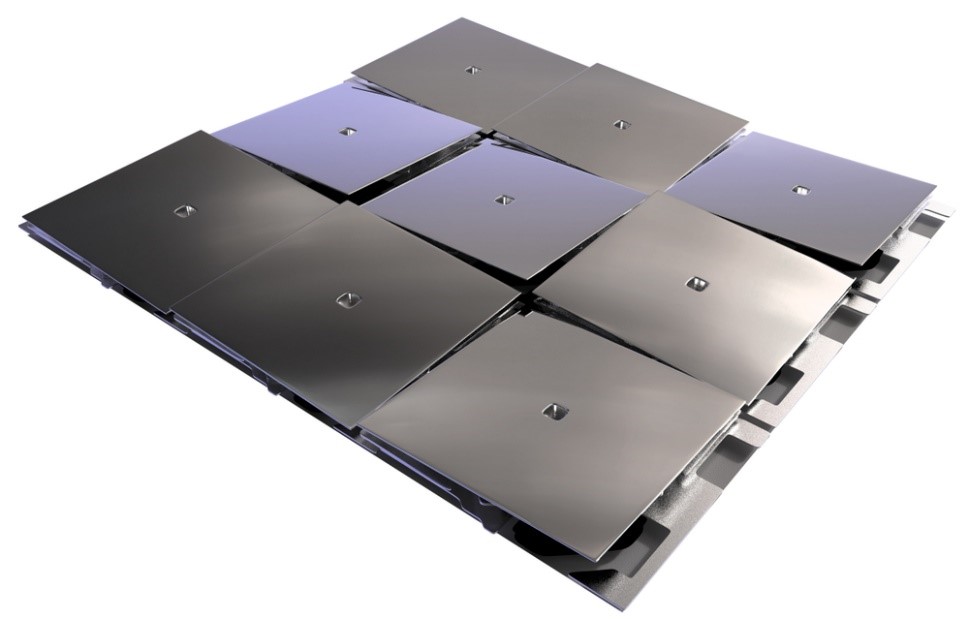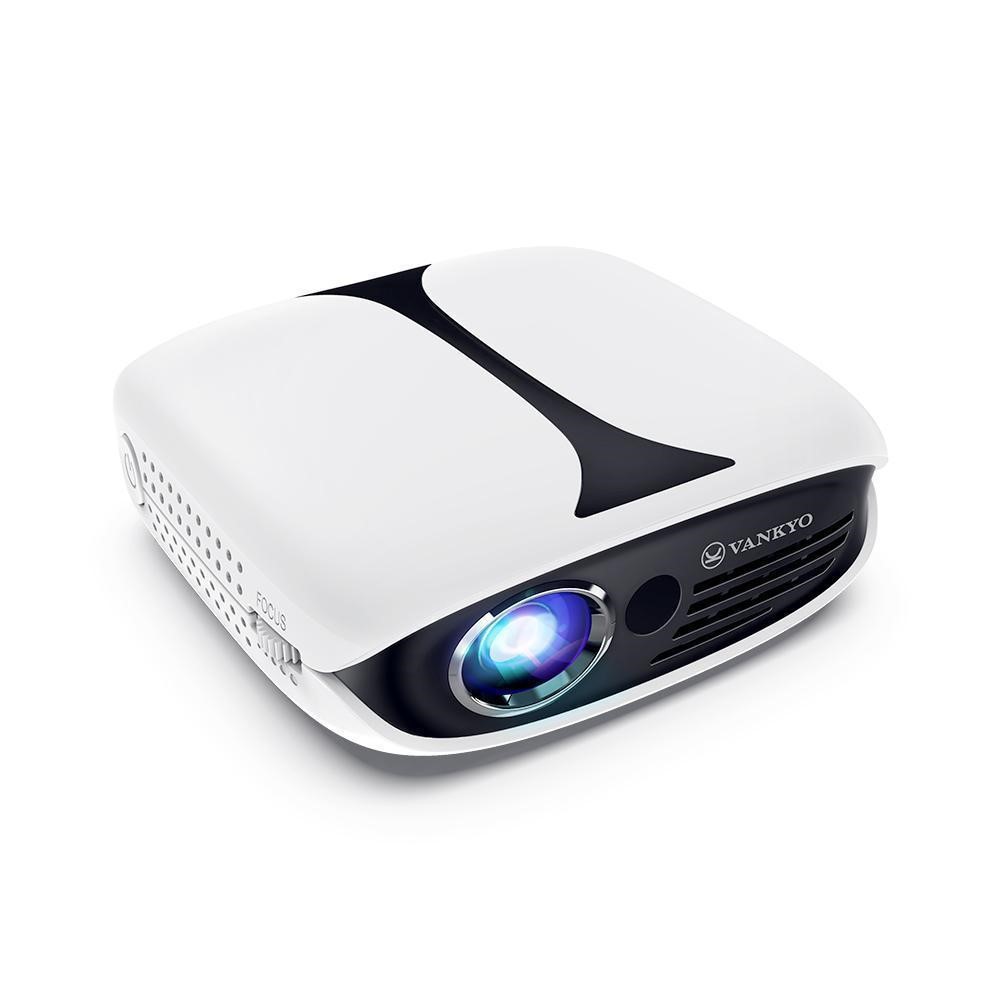DLP is the name given to Digital Light Processing projectors, which utilize either a single or three chips for projecting images. What’s more, every chip contains a multitude of micro-mirrors which are reflecting light over a thousand times each second.
On the other hand, polarized mirrors enable LCD projectors to function with a sustained quality throughout the years. These projectors are used widely today as they project high-quality projections with their resolution use that ranges from 4K in the entertainment high-definition era.
How Do DLP and LCD Projectors Work?
In a DLP projector, a focused light beam is passed through a rotating color wheel. It creates a flickering blue, green, and red light beam. The light is targeted at the digital micromirror device that aligns its micro-mirrors in the pathway of the projection depending upon the incoming data from the chip. The rays that are reflected create an image on the projector screen.
In an LCD projector, a focused beam of light with a high intensity passes through the LCD panel. This light creates a projected image on the screen. What’s more, this light passes through the mirrors and lens of the projector to obtain correct sharpness and focus. These mirrors and lens aid in regulating the magnifying power as well as in regulating the keystone. The overall brightness is mainly dependent on the lamp’s brightness. On the other hand, the resolution is determined by the total pixel number of the LCD panel.
What Kind of Projectors Use DLP and Also LCD?
DLP projectors on the baseline are able to project over 15 million colors. These mirrors are able to get repositioned quickly for reflecting the light through the light dump or the lens. The approximation of the mirrors in the DLP chip makes it challenging to visualize any gaps between the pixels, however. As a result, the DLP projectors project a more fluid image in comparison to the LCD projections.
The polarized mirrors of the LCD projector don’t block specific light colors and allow other colors to pass to recreate an image digitally. It almost reuses the exact principles which are used for creating cathode-ray tube images on the screen. In an LCD projector, the color channels are segregated firstly and then converged via a prism. This happens as they pass through the LCD panel, which is responsible for controlling the intensity as well as the saturation of the colors for the frames of a video displayed.
Cost Comparison
When it comes to cost comparison between the two, LCD projectors are more affordable as they have a starting range of 250 USD, while the starting range of their counterparts, DLP projectors, is 300 USD.
Also, LCD projectors have better cost-effectiveness than DLP projectors as the former come with better energy economy, image display, and noise reduction capabilities.
Pros and Cons Between the Two
DLP and LCD projectors come with their list of pros and cons; understanding the pros and cons of each projector will better help you to understand which one is suitable for you.
| DLP Pros | DLP Cons |
| Uses small microchip and micro-mirrors for better portability | Rainbow effect on DLP image quality |
| Low visibility of pixels for a smoother finish | Low yellow and red quality with low color intensity |
| The better color quality of the image on HDTV | More need for lumens because of the nature of technology |
| Smooth video display due to motion blur | Pricing range more expensive than LCD |
| Comes with more options for a lamp; standard lamps can also be used | Poor noise reduction |
| Better contrast than LCD projection systems | |
| LCD Pros | LCD Cons |
| Sharper and better image formation | Lesser contrast than DLP projectors |
| Lesser voltage use to improve the economy | Washed out and ashier display of monochromes |
| Better noise reduction and low heat dissipation | Screen door effect |
| Richer and more intense color dynamics | Poor portability because of size and weight |
| More affordable start of pricing range | Higher pixelation chance |
| No shadow effect production | Standard lamp is used only, and LED lamp is not used. |
Which One Is Popular, Why?
LCD projectors are used for indoor purposes such as in homes, schools, and offices as it demands more complexity in extension cording and wiring. On the other hand, DLP projectors are utilized for portable projectors such as pico and pocket types. This is because of the micromirror tech. This enables DLP projectors to be used in outdoor settings such as drive-in theaters, for example.
LED lamps come with the benefit of being much more luminous and durable as compared to halogen lamps. The latter lasts for a shorter while. The modern LCD ones are known to last up to 20,000 hours. We can say that LCD projectors are more common in the modern entertainment world due to their high illumination and innovative use.
Which Brand Makes Which of the Two?
BenQ, Optoma, Epson, ViewSonic, Sony Corporation, 3M, Dell, and InFocus are some of the brands which manufacture DLP projectors.
3M, BenQ, Epson, Canon, Casio, Christie Digital, and Hitachi are some of the brands which manufacture LCD projectors.
Almost all big enterprises in the video and TV entertainment world create LCD and DLP projectors ready for consumer use. However, LCD projectors are more common in use, so these are more readily available in different entertainment shops.
Why Should Someone Choose LCD Projectors Over DLP and Vice Versa
DLP projectors are forty-year-old, which creates high contrast images and more intensive compact units. However, they give a rainbow effect with motion blur. On the other hand, the LCD projectors display sharper images – however, there is visible pixelation and screen door effect on videos. However, you can see more prevalent use of LCD projectors in projecting images in the high-definition area.
If you want to choose the better option, it depends on your requirements and the imperfections that you are willing to tolerate. Every projector comes with its own list of advantages and disadvantages. Therefore, it pretty much comes down to the overall budget, choice, and the conditions in the end.


